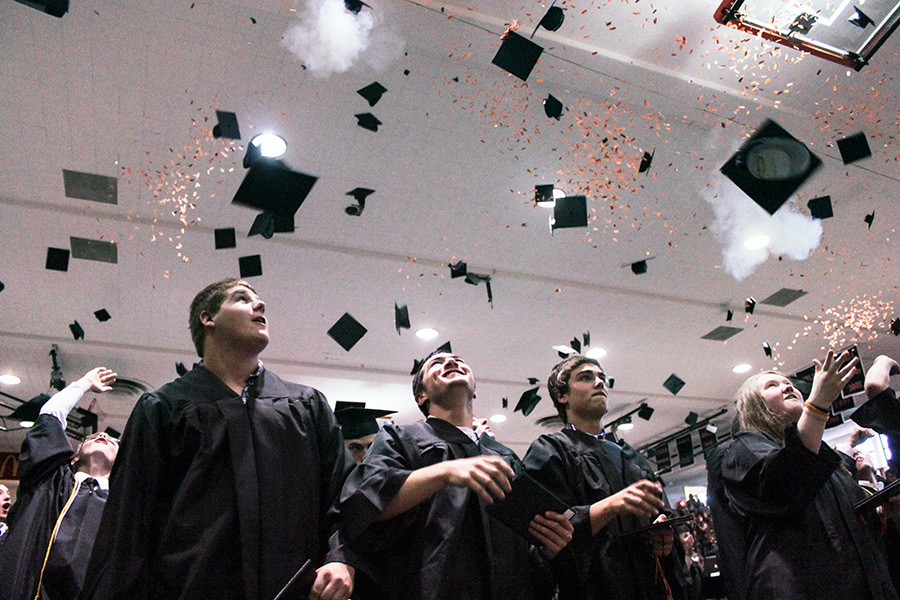Kalispell’s high school graduation rate has improved 11 percentage points since 2010 while Whitefish and Bigfork continue to score well above the statewide average, according to the latest statistics released last week.
The percentage of high school students graduating from Glacier, Flathead and Linderman Education Center has jumped from 74 percent in 2010 to 85.6 percent last year.
In Whitefish, 90.7 percent of high school students graduated in spring 2014, roughly the same as the previous year.
In Bigfork, the graduation rate increased to 95.2 percent, two percentage points above the previous year.
The graduation rate in Columbia Falls was 80.6 percent, roughly the same as the previous year.
The graduation rate in Libby stayed roughly the same at 85.3 percent.
Denise Juneau, the state’s superintendent of public instruction, released the latest school numbers last week, announcing Montana’s overall graduation rate had risen to 85.4 percent, the highest point since the state’s Office of Public Instruction began collecting the rate since 2000. Five years ago, Montana high schools had an 80.7 percent graduation rate.
The 2013-2014 school year marked the fourth consecutive term in which graduation rates – measured by those students who finished high school within four years – increased. Meanwhile, the statewide dropout rate remained fairly flat at 3.7 percent compared to 5 percent in 2009. There were 2,272 students who dropped out in Montana in 2008-2009 and 1,539 last year.
Juneau attributed a large part of the state’s success to the Graduation Matters Montana initiative, which has spurred communities and schools to increase efforts to improve students’ college and career readiness.
As part of the local initiative, Kalispell is hosting its annual “I-Pledge to Graduate” event on Feb. 6 at the Flathead County Fairgrounds, with more than 700 eighth-graders scheduled to attend and make plans for finishing high school in four years.
Mark Flatau, superintendent of Kalispell Public Schools, said staff members, teachers and students have made important progress in recent years to improve graduation rates.
“This is significant. Our staff has worked hard to keep those kids in school that would normally drop out,” Flatau said. “There’s a lot of factors at play, but I think our schools have become very intentional about raising that rate. We’re just grateful that it’s working.”
Over the past five years, the high school dropout rate for American Indian students in Montana has decreased from 12.3 percent to 9.7 percent, according to the OPI. Juneau said this trend is going in the right direction but the issue still needs to be addressed. While American Indian students make up 10 percent of statewide student enrollment, they account for 27 percent of students in grades 7-12 who drop out of school, she noted.
Juneau said she continues to push for legislation that would raise the state’s legal dropout age to 18 years old or upon graduation. Montana’s legal dropout age of 16 was established in 1921, a time of very different social and economic demands, she said.
“In today’s global economy, a student needs at minimum a high school diploma to find a decent-paying job,” she said in the state’s graduation report.
Previous attempts to raise the dropout age have failed during the legislative session.
Juneau said she is also focused on providing state funding for 19-year-olds who are completing high school. She said Montana is the only state that doesn’t offer financial aid to schools for students that age.
“Montana cannot afford to create disincentives for local schools that are working to graduate every student,” she noted.
